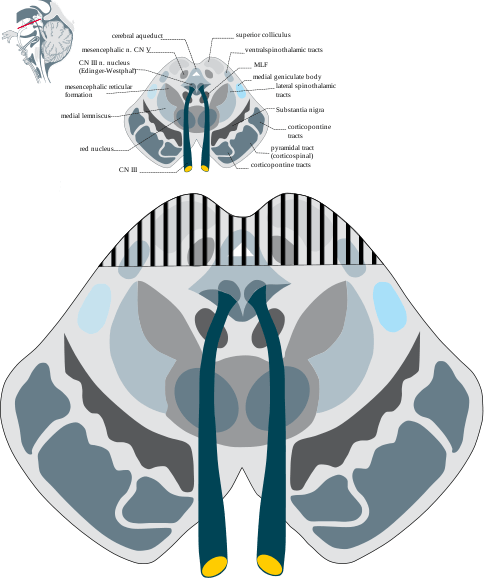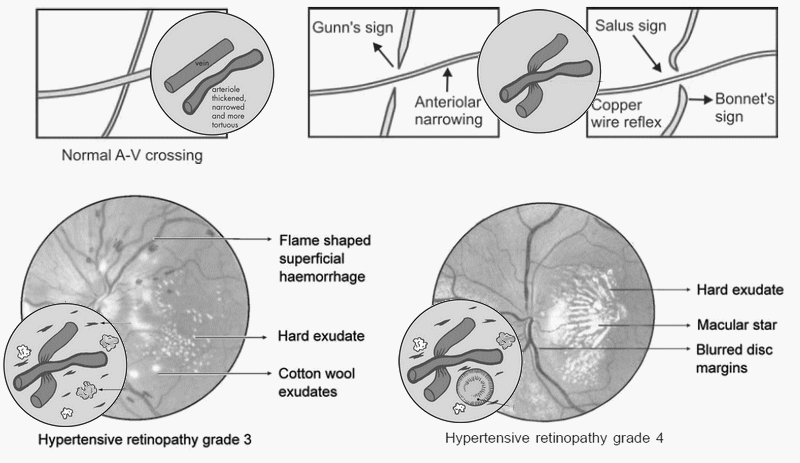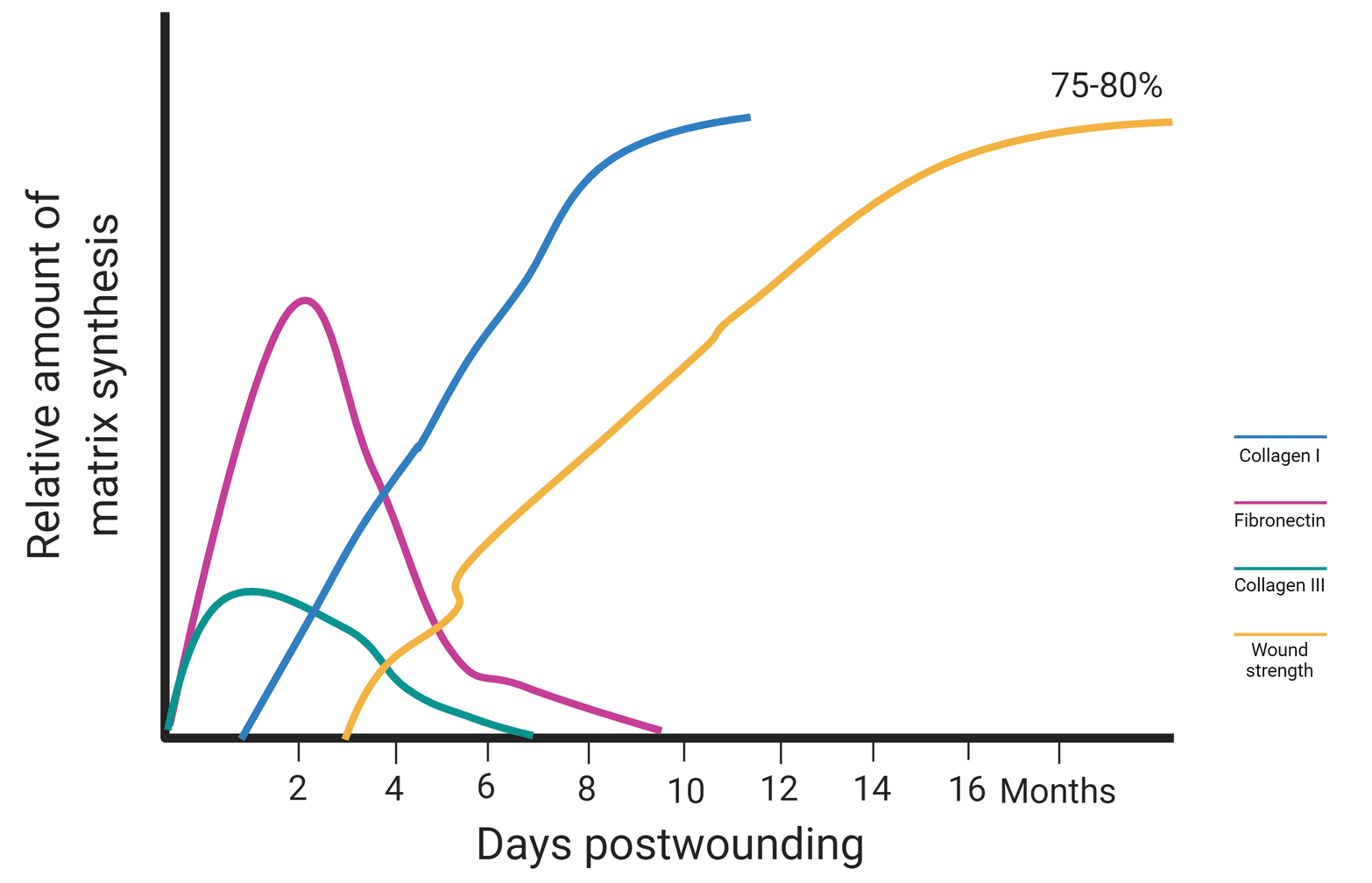Synonyms: Dorsal midbrain sydnrome, Pretectal syndrome
Main components of Parinaud syndrome:
- Vertical gaze palsy
- Convergence-retraction nystagmus
- Pupillary light-near dissociation
- Lid retraction (Collier’s sign)

Anatomical basis of Parinaud syndrome:
Site of lesion: Dorsal midbrain
- Close to cerebral aqueduct and pineal gland – hydrocephalus and pinealoma
- Arterial supply – posterior cerebral artery (stroke)
- Upward gaze palsy:
- Damage to vertical gaze center (rostral interstitial nucleus of medial longitudinal fasciculus, i.e. riMLF and interstitial nucleus of Cajal, i.e INC)
- Downward gaze involved only in late stages due to its bilateral innervation and also the pathways for downward gaze are directed medially from the rostral interstitial nucleus of the Medial Longitudinal Fasciculus (MLF); whereas, the fibers for upward gaze are directed laterally from the Medial Longitudinal Fasciculus and decussate in the posterior commissure. This makes them more susceptible to the pressure effect of space occupying lesions. .
- Convergence-retraction nystagmus:
- Damage of midbrain supranuclear fibers which normally has inhibitory effect on CN III nucleus
- Loss of inhibition leads to constant stimulation of superior and inferior rectus muscles – retraction of globe
- Constant stimulation of medial rectus – involuntary convergence
- Light-near dissociation:
- Damage to pretectal and Edinger-westphal nucleus leading to loss of parasympathetic innervation of iris, i.e. ability to constrict (nuclei responsible for pupillary light reflex lie more dorsally than those for the near reflex and are more susceptible to compressive effects)
- Lid retraction (Collier’s sign):
- As in convergence-retraction nystagmus, when there is loss of inhibitor supranuclear inputs on CN III nucleus, there is constant stimulation of levator palpebrae superioris (LPS) leading to lid retraction.


